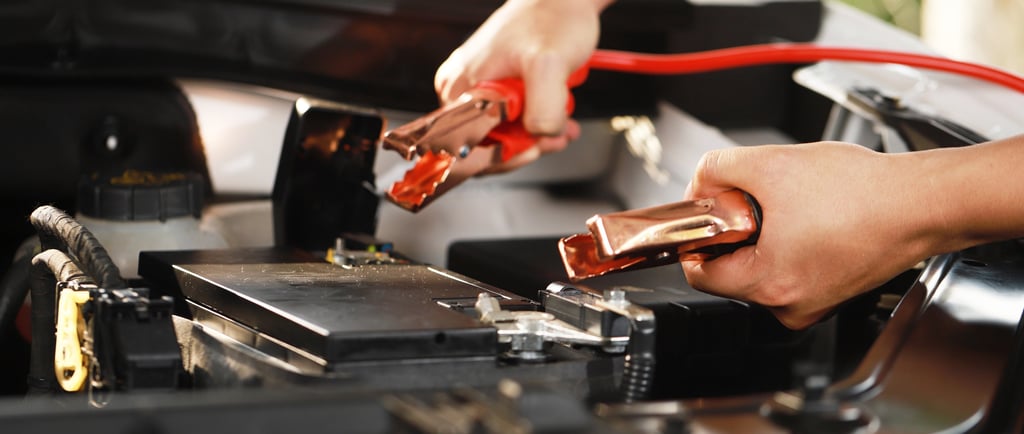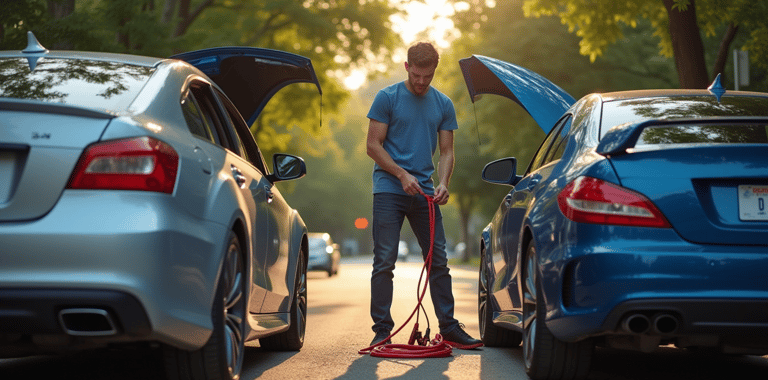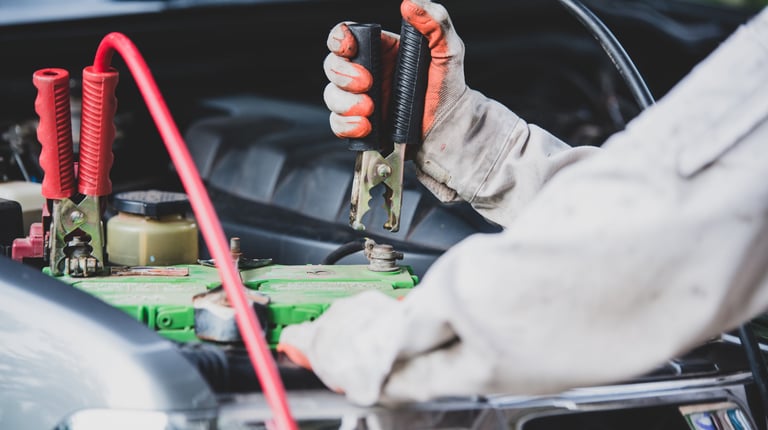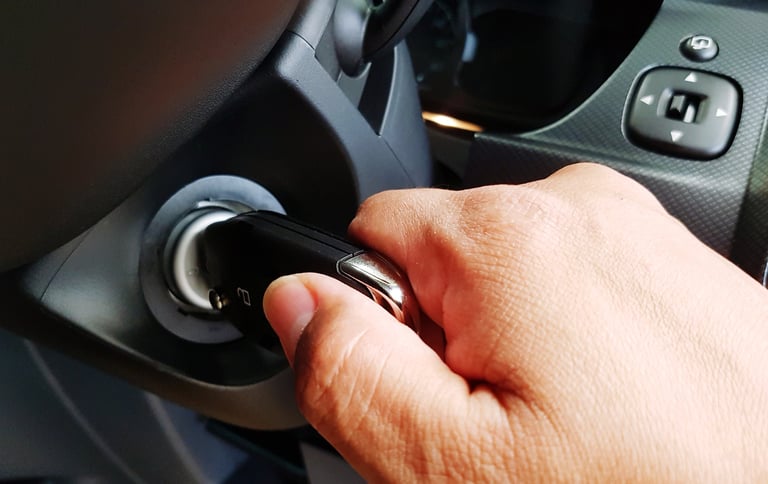How To Jump Start a Car? A Simple Guide
CAR MAINTENANCE
by Shashidhar Shetty
3/12/20253 min read


When you turn the ignition key to the START position, what if your car makes a clicking sound or is completely silent?
This is one of the most frustrating things for every car owner, and it can happen to anyone, whether by accidentally leaving any of the lights or electrical loads ON overnight or your vehicle having an old, worn-out battery.
In this blog, the jump-starting method of a car is explained in a few simple and easy steps so that anyone can do this without any hurdles.
What You Need:
A car with a healthy battery—for sourcing power to a dead battery.
Jumper Cables—Thick and good-quality cables with strong clamps for proper connection.
Jump Starter Tool—If no jumper cable or working car is available
How To Jump Start a Car?
1. Position vehicles correctly:
Always make sure to park the dead car close to the working car with an appropriate distance to connect both batteries.
With the keys out of both cars, apply the parking brake, move the gear lever to neutral in a manual car, and shift the gear lever to parking mode in an automatic transmission.
2. Jump Cable Connection:
Basically, battery jumper cables have two red and black colored clamps; red clamps are for positive terminals and black clamps for negative terminals.
Connect the red clamp of the jumper cable to the positive terminal of the dead battery and the other end of the red clamp to the positive terminal of the healthy battery.
Then attach the black clamp of another cable to the negative terminal of the healthy battery and the other black clamp to the car body or ground, which is an unpainted metal surface or bolt on the dead car.
If you don’t have a battery jumper cable or don’t want to ask for help from others in case of a breakdown due to a dead battery, the Battery Jump Starter Tool from Amazon can be a great choice.
3. Start the Good Car:
The working car should be started at first and let in idle condition for about 5 mins to make sure the battery is charged to its best.
4. Start the Dead Car:
With properly connected clamps of jumper cables, now it's time to start the dead car by turning the ignition key. If the car cranks and starts without any trouble, let it run in idling condition for 15-30 minutes to recharge the dead battery.
If the starter motor is still making a click or no noise, then there might be an issue with the starter motor that requires a repair or replacement to rectify the issue.
5. Remove Jumper Cables:
In the reverse order, remove the jumper cables from both batteries once the dead car starts.
Make sure that the clamps do not touch each other during a removal from battery terminals.
Occasionally, a car starts and turns off after a while due to a failed alternator or generator, which may not be charging the battery. Corroded or loose battery terminals are also causing vehicle-not-starting issues in a car.
Final words:
A battery drain issue can happen at any time due to several reasons such as leaving headlights, interior or accessories turned on accidentally and irregular usage of the vehicle.
It is advised to run the engine for a few minutes if the usage is extremely low and to regularly check the battery's condition.










Image Credit: Freepik
Explore car technology, maintenance tips, and tricks.
Support
Connect
contact@sheartorque.com
Copyright © 2025 ShearTorque. All rights reserved.
